Ryan Hall's Blog, page 237
July 5, 2016
Shoe Of The Week: Nike Air Zoom Pegasus 33
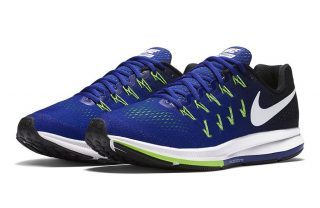
When Nike launched the first Pegasus in 1983, running shoe design was still in its infancy—as were the Millennials who are now helping reshape recreational running. Nike has adapted and evolved this legacy training shoe quite well, especially in the past couple of years. The biggest updated to the newest version is the addition of Zoom Air cushioning under the forefoot. (The previous two versions only had Zoom Air under the midsole in the rear of the foot.) The upper, Cushlon (EVA) midsole and outsole lug pattern have also been slightly changed, but the results of those updates are subtle. Nike’s Flywire sidewall/arch support system, partially gusseted tongue and an engineered mesh upper combined to provide a near-custom fit. (Like most Nike shoes, the fit is narrow and athletic with only a little wiggle room in the toe box.)
The Pegasus remains a very versatile shoe for a wide range of runners and a wide range of types of running. There really isn’t anything the Peg isn’t suited for, especially now that it has the extra cushy spring in the forefoot. It’s great for high-mileage training, it’s ideal for tempo runs and speed work and it’s light and energetic enough to race from 5K to the marathon. It doesn’t mean it should be the only shoe in your quiver, but it certainly could be.
This is the shoe for you if: … as always, if you’re looking for a very versatile, do-everything shoe.
Price: $110
Weights: 9.7 oz. (men’s size 9.0); 8.1 oz. (women’s size 7.0)
Heel-Toe Drop: 10mm; 29mm (heel), 19mm (forefoot)
Info: Nike.com
RELATED: Shoe Of The Week—Hoka One One Clayton
The post Shoe Of The Week: Nike Air Zoom Pegasus 33 appeared first on Competitor.com.
Workout of the Week: 10K Overdistance Intervals
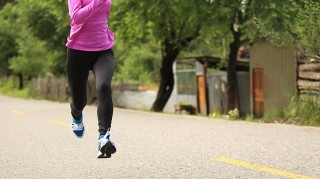
Photo: Shutterstock.com
This challenging speed workout helps build fitness and boost confidence leading up to your goal race.
The challenge of finishing a marathon or ultra-distance race is all the rage right now, but racing a tough 10K is an endurance endeavor of another sort that even a lot of competitive runners quietly choose to avoid. While completing the distance doesn’t pose much of a problem, pushing close to your limit for 6.2 miles is a different kind of difficult.
Preparing to race shorter, more intense distances also requires a gradual shift in the focus of your key workouts. While long runs, hill workouts and tempo runs still have a place in your training program—especially in the base phase when you’re still building strength—more regular race-specific interval sessions will help fine-tune your fitness and boost that all-important element of confidence in the final 4-6 weeks leading up to your goal event.
RELATED: 10 Must-Do 10Ks in the United States
The 10K Overdistance Interval Session is a 10K-specific workout that starts with four 60-second repetitions at 3K race effort (about 30 seconds per mile faster than 10K race pace), progresses to four 1.5-mile intervals at 10K race effort, and finishes with four more 60-second repetitions at 3K race effort. When all is said and done, the workout totals about 7-7.5 miles worth of quality work.
“It is not an early season workout,” emphasizes Ryan Carrara, coach of New Balance Boston, whose men’s and women’s teams finished 15th and 7th, respectively, at last December’s national club cross-country championships. “Everything about this workout is control—too hard at the start and it can not be completed; too easy the first half and you will not gain all the benefit. There are plenty of spots to adjust so most athletes dial it in and nail it.”
Here’s how you do it:
The Warmup: Run easily for 2-3 miles (or 15-25 minutes); follow with dynamic stretching exercises, drills, and 4-6 x 20-second strides.
The Workout: 4 x 1:00 @ 3K race effort w/1:00 recovery between reps; 4 x 1.5 miles @ 10K race effort with 3:00 rest between reps; 4 x 1:00 @ 3K race effort w/1:00 recovery between reps
The Cooldown: Run easily for 2-3 miles (or 15-25 minutes), stretch, refuel
Carrara likes to have his athletes do this workout about 4-5 weeks out from a goal 10K and says the session should be done in an environment that is specific to the event you’re targeting. If you’re preparing for a 10K road race, the workout should be done on the roads; if you’re racing cross country, seek out a grass loop or packed dirt trail.
“Simulating 10K effort and feel is difficult without sacrificing the [remainder of your key] workouts,” Carrara explains. “The volume of this workout allows race pace to feel manageable and the faster one-minute reps add the anaerobic element and feel of the last 2K. The recovery from this workout is not long due to the generous rest.”
The post Workout of the Week: 10K Overdistance Intervals appeared first on Competitor.com.
Photos: 2016 U.S. Mountain Running Championships at Loon Mountain
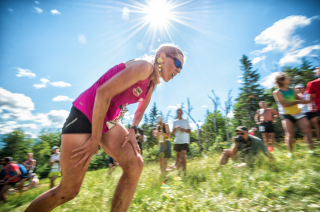
Sometimes in trail running, race directors create courses with wickedly steep hills. All you can do is keep pumping your arms and legs and lungs until the madness ends. Such was the case at the 2016 U.S. Mountain Running Championships, which were held on July 3 on the gruelingly steep ski slopes at Loon Mountain near Lincoln, N.H. For the 600 or so courageous runners who entered, the madness didn’t end until they reached the top of the mountain after completing the infamously steep Upper Walking Boss section of the course (a 40 percent grade!) and 3,100 feet of total climbing. The top six men and the top four women earned spots on the U.S. team that will compete in the 2016 World Mountain Running Championships in Bulgaria in September. Merrell-sponsored runner Joe Gray, of Colorado Springs, won his 10th U.S. title, winning the men’s race in 49:12. Hudson Elite/Brooks athlete Addie Bracy of Longmont, Colo., won the women’s race in 57:25, her first U.S. championship win. Check out the photos of the crazy steep course from Joe Viger below!
RELATED: Bracy, Gray Win U.S. Mountain Running Championships
Photo Gallery
1 of {count}
Back to Start
View Larger Image
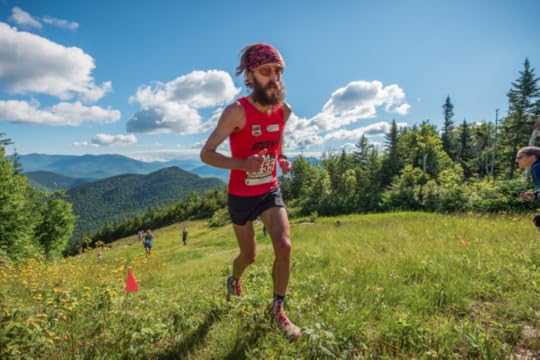
2016 U.S. Mountain Running Championships
View Larger Image
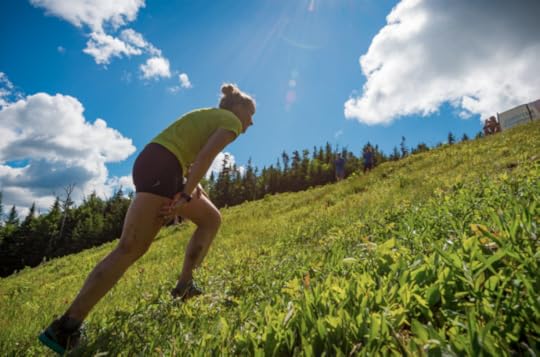
2016 U.S. Mountain Running Championships
View Larger Image
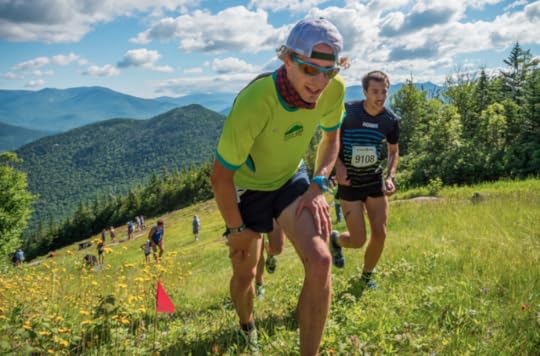
2016 U.S. Mountain Running Championships
View Larger Image
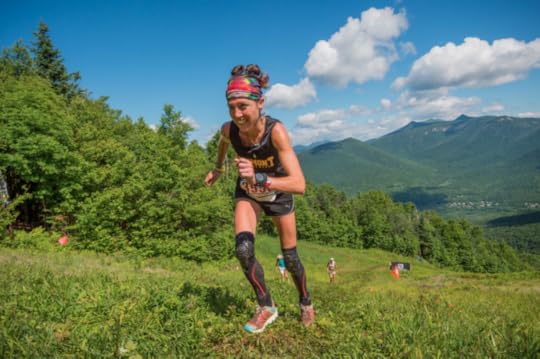
2016 U.S. Mountain Running Championships
View Larger Image
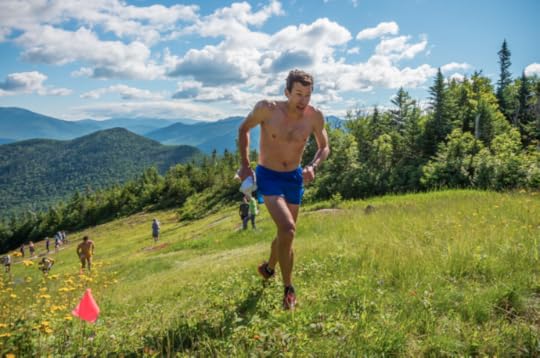
2016 U.S. Mountain Running Championships
View Larger Image
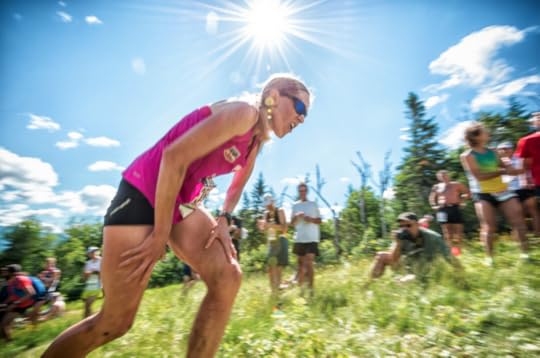
2016 U.S. Mountain Running Championships
View Larger Image
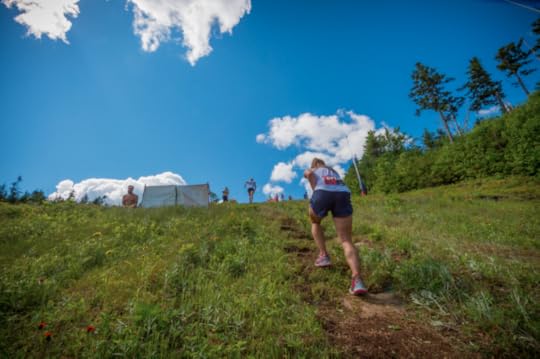
2016 U.S. Mountain Running Championships
View Larger Image
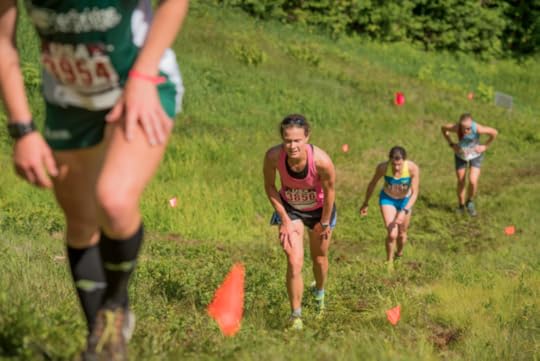
2016 U.S. Mountain Running Championships
View Larger Image
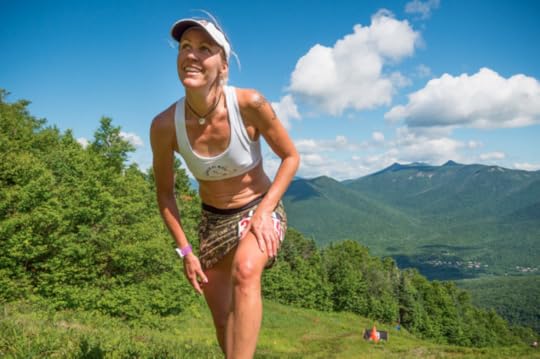
2016 U.S. Mountain Running Championships
View Larger Image
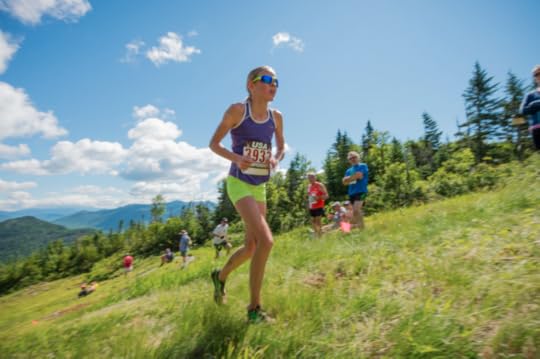
2016 U.S. Mountain Running Championships
View Larger Image
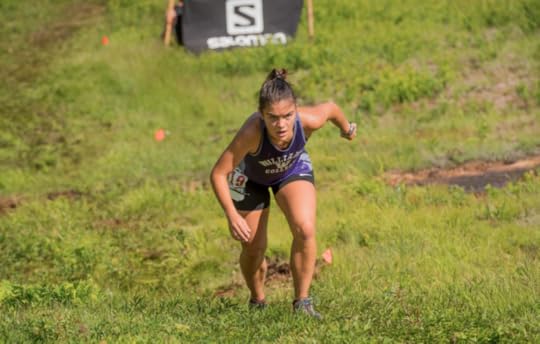
2016 U.S. Mountain Running Championships
View Larger Image
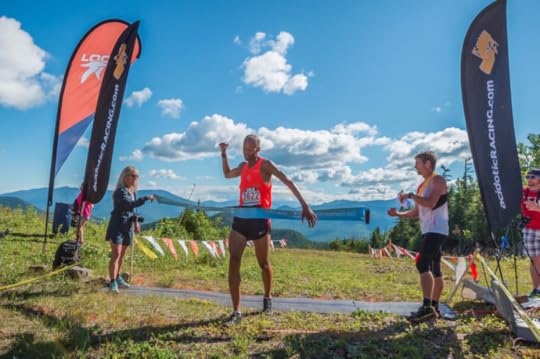
2016 U.S. Mountain Running Championships
View Larger Image
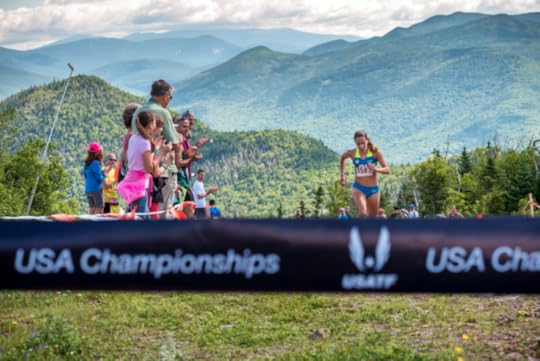
2016 U.S. Mountain Running Championships
View Larger Image
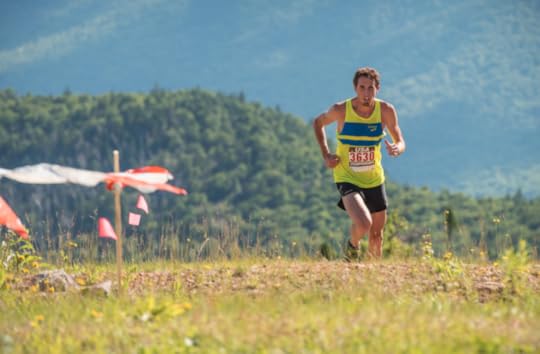
2016 U.S. Mountain Running Championships
View Larger Image
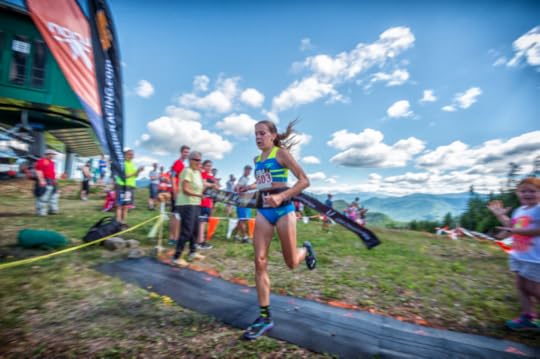
2016 U.S. Mountain Running Championships
View Larger Image
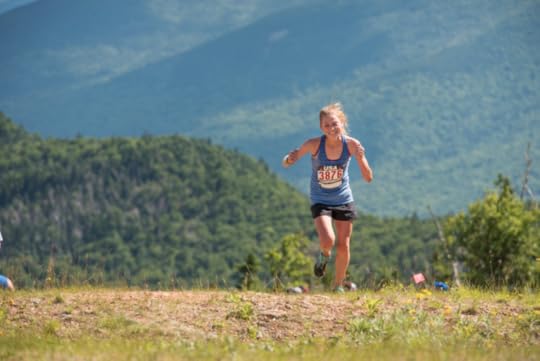
2016 U.S. Mountain Running Championships
View Larger Image
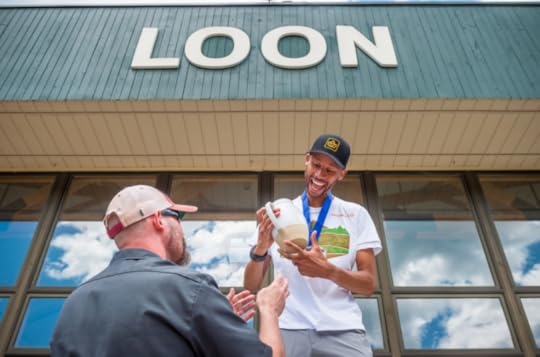
2016 U.S. Mountain Running Championships
View Larger Image
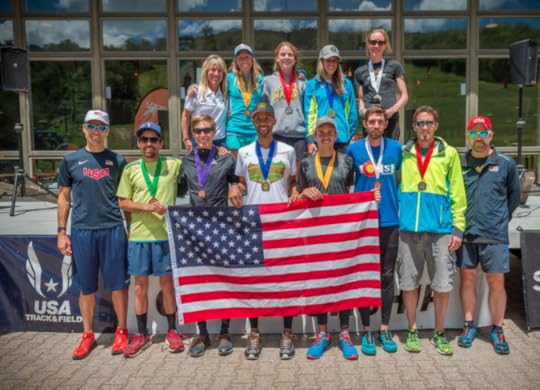
2016 U.S. Mountain Running Championships
Related Galleries
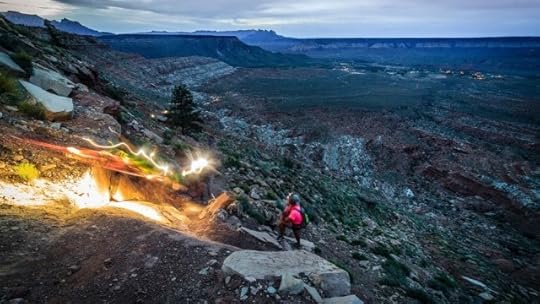
Photos: 2016 Zion 100 Miler
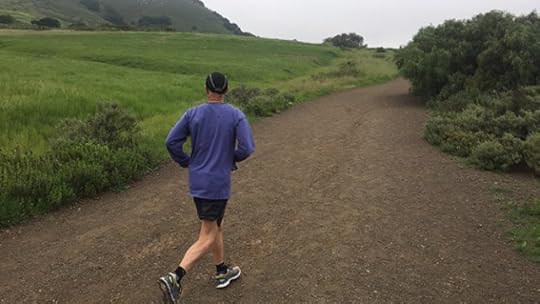
Photos: Trail Running in San Luis Obispo, California
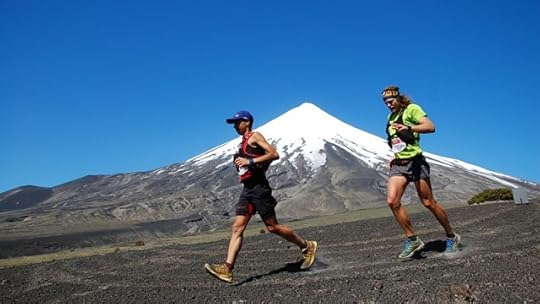
Photos: A Glimpse Inside The Volcano Ultra Trail Races in Chilean Patagonia
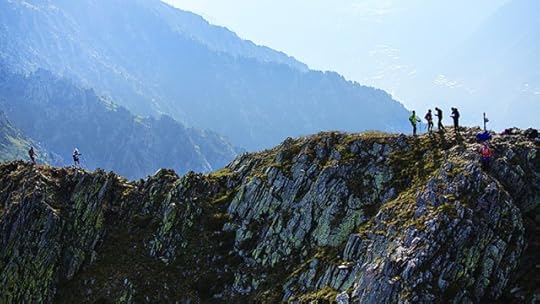
Photos: Andorra’s Ultra Trail Vallnord

More Galleries
The post Photos: 2016 U.S. Mountain Running Championships at Loon Mountain appeared first on Competitor.com.
July 4, 2016
U.S. Olympic Trials Heats Up With Wild Women’s 800
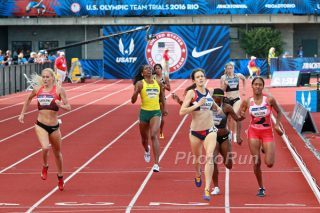
Photo: PhotoRun.net
(c) 2016 Race Results Weekly, all rights reserved. Used with permission.
EUGENE, Ore. —There is a saying that the USA Olympic Trials are more about heartbreak than happiness.
Such was the case this afternoon in the women’s 800m, where a pair of Olympic contenders were tripped up while three others sprinted their way to glory. The trio smiling after two laps were Kate Grace, Ajee’ Wilson, and Chrishuna Williams. The unlucky duo: Brenda Martinez and Alysia Montano.
Through 400 meters in 57.46, Montano held a solid lead with Oregon’s Raevyn Rogers and Wilson behind. Executing her plan to stay out of trouble, Montano appeared strong as she rounded the curve and headed down the backstretch. Behind her, the field was shifting like chess pieces. Strategies were unfolding left and right.
Wilson moved up, as did Molly Ludlow, and Martinez began her patented slingshot move on the outside through 600 meters.
The Bowerman Curve—which has seen so much magic over the years—claimed two victims in a matter of seconds.
Montano began to tighten up as she hit 250 meters to go, yet kept pumping with hopes of keeping the lead. Going by on the outside was Wilson, then Rogers on the inside. When Martinez followed Wilson, she gradually moved to her left and gained two steps on Montano. Yet reaching the curve’s apex, Montano’s momentum carried her into the heels of Martinez. The pair tangled.
Martinez flailed her arms and managed to stay upright, but her momentum was halted. Montano tumbled to Hayward Field’s maroon surface with a thud. With that, both of their Olympic dreams went up in smoke.
Managing to avoid the mayhem were Grace, who was well-placed in the inside line, Wilson, and Williams. They’d power down the stretch to finish first, second and third in 1:59.10, 1:59.51, and 1:59.59, respectively. Yet most of the 21,713 fans in Hayward Field kept watching Martinez and Montano.
“I think I executed the plan but I got clipped and lost my momentum. I felt great, but that’s track and field,” said a heartbroken Martinez, first to speak to reporters. Tears formed in her eyes. “I trained so hard and it just didn’t come together that last 150m… I just couldn’t regain my composure I guess. That’s what I’ve been practicing in the rounds, just slingshotting off the turns.”
While Martinez still has an opportunity to qualify for the Olympic team in the 1500m later this week, her best shot was likely the 800m. Husband and coach Carlos Handler was visibly frustrated and upset, saying that it was entirely Montano’s fault for the mix-up. Though he did file a protest, it was denied by meet officials. She wound up seventh in 2:06.63.
Taking more than a minute to make her way down the final straight, Montano fell to the track multiple times out of sheer heartache. Last in 3:06.77, she spent 30 minutes trying to compose herself before entering the press center with daughter Linnea by her side. Tears flowed down both cheeks.
“I was really, really focused on executing my race, and part of that execution was staying mentally in it, mentally strong,” she said. “I stepped out there and so perfectly executed my race. I knew that the girls were going to panic and were going to start going crazy with 200 to go. I just needed to stay on the outside of lane two, and at 150 turn on the jets. We’ve practiced it a thousand times. At 150 I was in the most safe position so far out. You can’t predict what happens with someone else…” Her voice trailed off.
Montano’s emotion was pent up not just because of the race’s outcome, but also because of the tumultuous months she’s had to go through to get to this point. With the revelation of the Russian systemic doping in athletics, it came to light that Montano was cheated out of multiple global medals, including one from the 2012 Olympics.
Having no faith in the IAAF system, Montano said she’d focused all her mental, emotional, and physical energy into today’s final. Today’s final was supposed to be her time to shine and return to the Olympic stage again, an Olympics where the Russians were banished and she’d have another shot at taking a lap of honor.
With the fall, however, all hopes of redemption were gone.
“It doesn’t really set in at that moment in time, especially when it’s like, ‘this is it,'” Montano said. “You get up and you’re really far away. Your heart breaks.”
“I felt like my biggest struggle has been staying emotionally intact with everything in the sport, finding peace in why I am even trying for an Olympic team knowing what the IAAF has done, what it means to even go for a medal. That was my biggest struggle this year. And I made it, I made it all the way to the final with all of that emotional baggage carrying with me. Yeah, I guess in a way I felt like if I could get through that this would be the easy part.”
For more than 10 minutes Montano answered question after question, her voice quivering at points because of the heartache. Yet to her credit she didn’t run off or deflect the hard questions. She answered straight on, taking a few seconds here and there to look at her daughter and pull her close. Husband Louis stood behind the pair.
At the end of the day, though, there were three deserving women who qualified for Rio and the Olympic Games. For Grace, she picked the perfect time to finish on her first championships podium; the Oiselle and NorCal Distance Project athlete had never before placed in the top three at a high school, NCAA or USA Championship.
“It’s surreal and I’m ecstatic. I can’t believe it,” said the Yale University alum. With the support of family and friends in the crowd, many of whom have been by her side through injuries and tough spots, Grace said the win even more meaningful. “It’s been a long, long road.”
Neither Wilson nor Williams let the fall enter their mind in the final straight. Both knew their first Olympic team berth was at stake. Williams, interestingly, only trains on the track, and does not do the typical mileage of an 800m specialist. She only converted to the event at the University of Arkansas where she was a 400m runner.
Summing up the two lap race with maturity beyond her 22 years, Wilson was candid.
“With our race, everyone wants to be in the optimal position. Everyone’s coach tells them to try and be towards the front, third, fourth, on the outside of lane two. When you have everyone trying to get that position, there are going to be casualties. People are going to bump into each other or go down,” she said. Wilson has been a victim of similar incidents before. “It sucks when it’s you, but at the end of the day it’s part of the game.”
Heartbreak wasn’t reserved for Martinez and Montano. Ludlow—fourth at both the 2012 Trials and 2014 U.S. National Championships—took fourth once again in 1:59.63.
Murphy, Berian, Jock Comprise Men’s Olympic Team
Martinez’s Big Bear Track Club teammate Boris Berian was the American leader in the 800m and entered tonight’s nine-man final with a purpose. Off of an unusual waterfall start (six back and three up), he moved up through the race’s first lap then hit the bell first in 50.60. Berian took control and began opening his stride up a la the Prefontaine Classic (where he won in 1:44.20).
Early front runners Brandon Johnson and Isaiah Harris seemed to pay the price for their aggression, as Berian continued to press out front. This came all while Murphy and Jock slowly picked competitors off one by one; Murphy was second to last at the bell.
With 200 meters left Murphy knew he’d have what it takes to finish in the top three and lock up an Olympic spot. Only after he passed Berian with 10 meters left and approached the stripe did he think he’d win. Crossing in 1:44.76, Murphy took home his first USA national title.
“It’s overwhelming. The Olympian part over-weighs the national championship part for sure because the goal was to get top three going in. To be an Olympian and to be able to represent Team USA is something I’ve dreamed of since I started running. I can’t wait to get to Rio,” said Murphy, 21. The former Akron Zip has been on a tear for the last 12 months: he competed at the ’15 IAAF World Championships, making the semi-finals; won the NCAA Indoor Championships 800m crown; ran to a first place in the NCAA Outdoor Championships 1500m at Hayward Field, and now is booked for the Olympic team thanks to a victory here.
“The big goal was to be an Olympian at the top of the list and second goal was to win an NCAA title. I’ve checked off those two goals,” he said. “I’d say everything’s gone to plan so far, to come out on top both times. But there’s still one large meet left to run well at. Like I said, there’s one month to get ready and the goal is to try to make the final there.”
Murphy will be joined by Berian (second, in 1:44.92) and Jock (third, 1:45.48) in Rio de Janeiro. Fourth place went to Ole Miss Rebel Craig Engels, a late addition to the field after officials allowed him to advance after he fell in the semi-finals.
“It’s a big relief. It’s a stressful four days, but it’s all worth it,” Berian, the 2016 world indoor champion, said. “I’m just so proud right now.”
The most blue collar fact to come out of the 800m was that Jock, a Nike Oregon Track Club Elite member based in Eugene, had ridden his bicycle to and from Hayward Field today.
“Like dawg I woulda given you a ride,” tweeted his Nike Oregon Track Club Elite teammate Pat Casey.
Wild Last Lap Concludes Men’s 5,000m Prelim
It would take a final circuit in the 53-second range to advance to Saturday’s 5000m final. In section one, Portland’s Woody Kincaid took the field by surprise, surging ahead of Ryan Hill and Ben True. Kincaid managed to hold his pace around the track and into the stretch, finishing the final lap in 53.72 seconds to take the win in 13:47.86.
“We were jogging for most of it, and it was nice to be able to close hard,” said True, third in 13:48.11. “But man, the Portland guy Kincaid, he has some wheels. I think we have to make the final a little bit quick to zing all the kick out of these young guys.”
Hill was second in 13:47.89, while 10,000m Olympian Shadrack Kipchirchir was fifth. All will advance to the final.
The entire field surged at the bell of the second section, though it was the wisest and most seasoned vet in the field crossing the line first: 41-year-old Bernard Lagat. Lagat ran 53.64 to close the race, bouncing back strong from a DNF in Friday’s 10,000m.
“I was composing myself to make sure I was out of trouble and ready to go fast that last lap,” said Lagat. “What happened in the 10,000m was something, it’s a new event for me… I thought I was ready to come back in the 5000m because I’ve been resting in the hotel, doing nothing really, just jogging, and I felt like I was ready coming into the stadium today.”
Other notable finishers in the heat were Lopez Lomong in second, Eric Jenkins third, Hassan Mead fourth, and Paul Chelimo fifth (despite mistakenly taking a Tylenol PM—the drowsy kind—rather than regular Tylenol before the race). Galen Rupp drew a loud cheer from the crowd when his name popped up on the video board after a long delay, securing the sixth and final automatic qualifying spot in 13:48.50.
Among those not to advance were 10,000m Olympian Leonard Korir and Nike Bowerman Track Club member Chris Derrick.
Favorites Easily Advance in Steeplechase
All favorites advanced with ease in both the men’s and women’s steeplechase prelims. Olympic veterans Emma Coburn and Donn Cabral had the fastest times on the day, running 9:35.28 and 8:26.96, respectively.
“Any steepler will tell you rounds still don’t really feel easy. It’s definitely a different effort than an all out race, but we’re still navigating barriers,” said Coburn. “It felt as comfortable as a steeplechase can feel I think, and I’m just ready to rest up and get ready for Thursday.”
Olympian Bridget Franek took the first section in 9:39.93 over Courtney Frerichs (9:40.98), while Leah O’Connor ran 9:35.77 to edge Stephanie Garcia (9:35.95) and Colleen Quigley (9:37.03) in heat two.
American record holder Evan Jager and NCAA champion Mason Ferlic finished one-two in the second men’s heat.
“I wanted to get through that as relaxed as possible,” said Jager, who led the second half of the race after staying tucked in the main field. “My main focus, only focus, this year has been coming here, being fit and making the team and hopefully, if I make the team, do well in Rio.”
Action on the track pauses for the next two days before distance races resume on Thursday, July 7, with the women’s 5000m prelim, men’s and women’s 1500m prelims, and women’s 3000m steeplechase final.
The post U.S. Olympic Trials Heats Up With Wild Women’s 800 appeared first on Competitor.com.
Photos: 2016 Peachtree Road Race
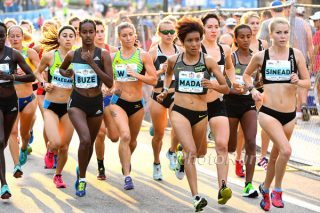
The largest road race in the United States was back for its traditional July 4th running. The Peachtree Road Race in Atlanta was a hot one, with temperatures reaching the high 80s with plenty of humidity.
Gabriel Geay of Tanzania was the men’s winner, finishing in 28:49. Edna Kiplagat of Kenya won the women’s race in 32:24. The top Americans were Abdi Abdirahman in 29:24, five seconds ahead of Jared Ward. Neely Spence Gracey was the top American female in 33:25.
Here are photos from the day, taken by PhotoRun.net:
Photo Gallery
1 of {count}
Back to Start
View Larger Image
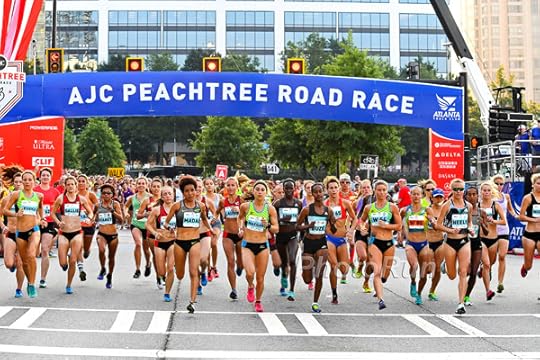
View Larger Image
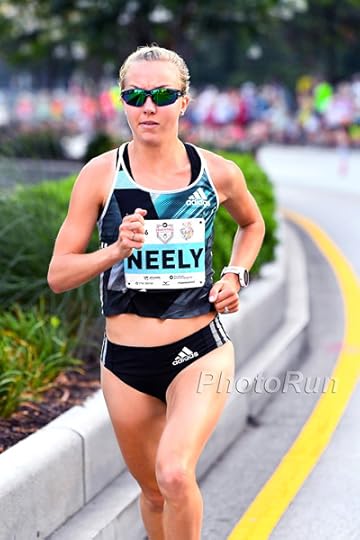
View Larger Image
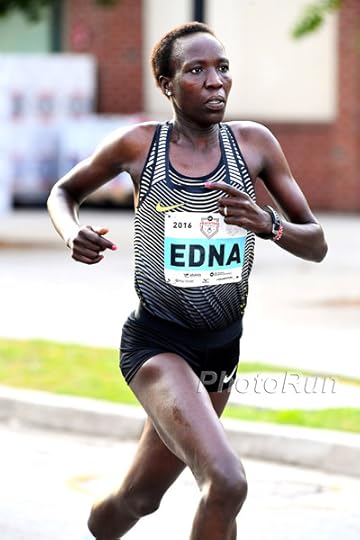
View Larger Image
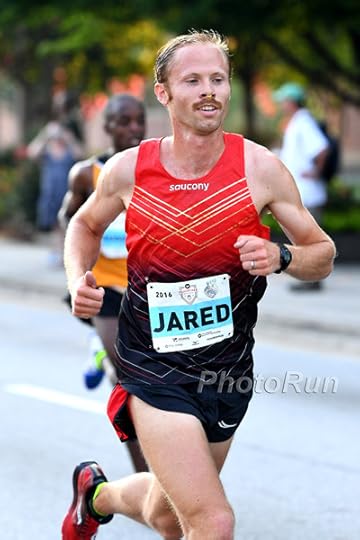
View Larger Image
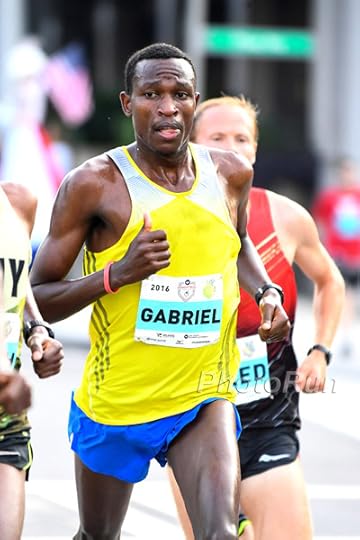
View Larger Image
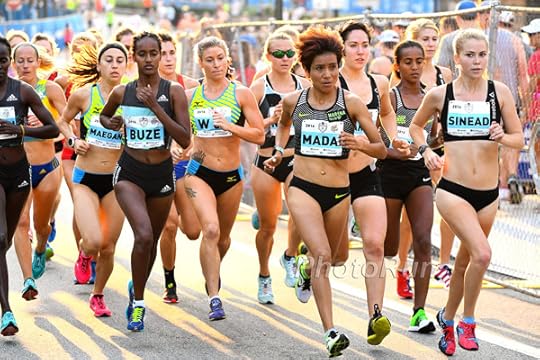
View Larger Image
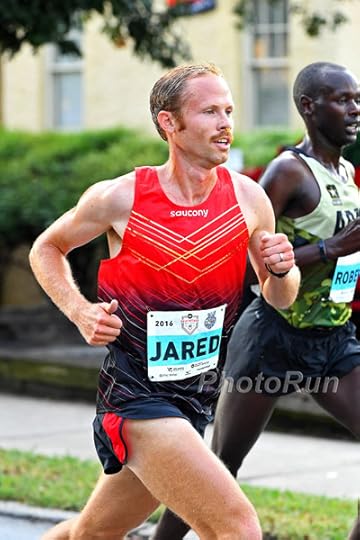
View Larger Image
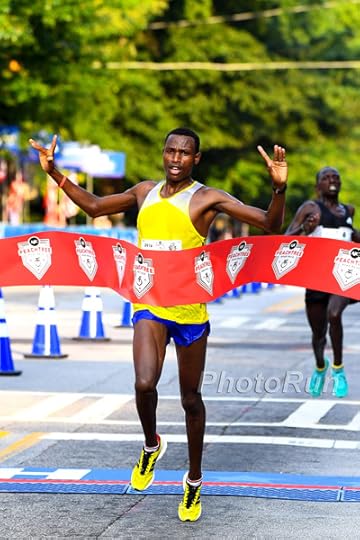
View Larger Image
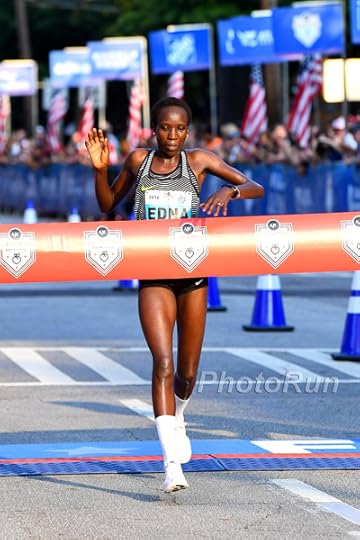
View Larger Image
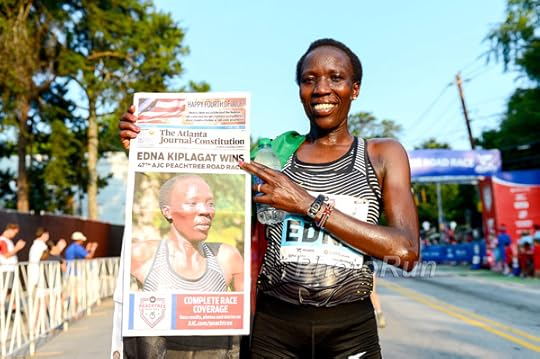
View Larger Image
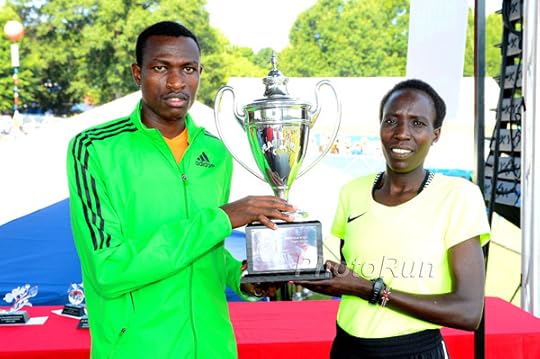
View Larger Image
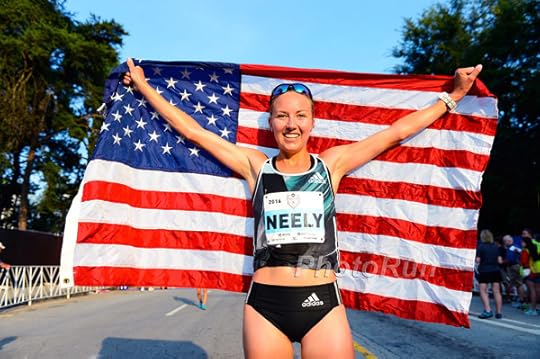
View Larger Image
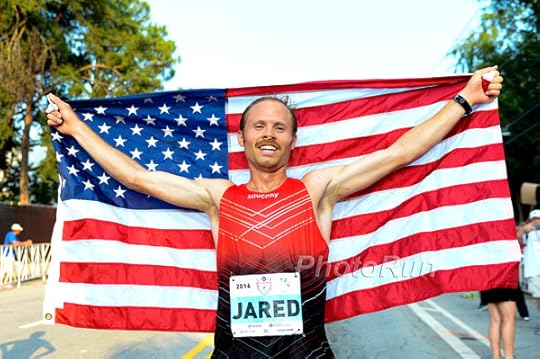
Related Galleries
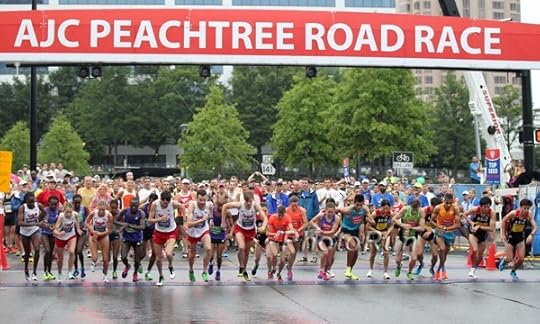
Photos: 2015 Peachtree Road Race
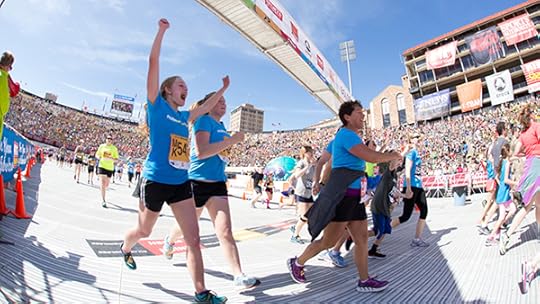
10 Must-Do 10Ks In The United States

More Galleries
The post Photos: 2016 Peachtree Road Race appeared first on Competitor.com.
July 3, 2016
Retro Running: Nike’s Epic ‘Battle of Atlanta’ Poster
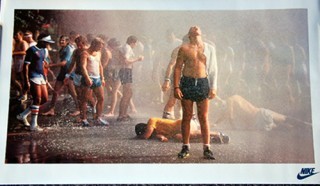
This vintage Nike poster was one of the iconic images of the original running boom. Photo: Ebay
Running has changed considerably in the last several years. It’s become a very social, much more inclusive activity, plus it’s more about the experience and not necessarily how fast you run. But one could argue that it’s always been that way. In fact, all you have to do is take a look at this vintage image of the 1978 Peachtree Road Race to understand that the more things change, the more things remain the same. The Peachtree 10K is held every July 4 in Atlanta—it celebrates its 48th running this year—and the image of the hot and steamy 1978 race, taken by Atlanta photographer Chuck Rogers, was immortalized for a generation of runners of the original running boom in a Nike poster called “The Battle of Atlanta” that was sold at running stores and sporting goods shops through the mid-1980s. (Nike published dozens of running posters back then, including several under the “There is No Finish Line” theme.)
The photo depicts a wide range of runners (in classic 1970s running garb) cooling off in a spray of water after the race. The biggest difference between then and now, of course, is that there are few women captured in this photo and now more than 60 percent of all race participants are women. Urban legend and some inaccurate blogs have suggested one of the men on the ground in this photo died, but there’s no substantiated truth to that rumor. However, the poster did appear as a wall-sized mural in the 1985 movie “St. Elmo’s Fire,” a popular film starring Judd Nelson, Demi Moore, Emilio Estevez, Rob Lowe and Ally Sheedy. Copies of the poster can still be found for sale on eBay and other sites.
The post Retro Running: Nike’s Epic ‘Battle of Atlanta’ Poster appeared first on Competitor.com.
Addie Bracy, Joe Gray Win U.S. Mountain Running Championships
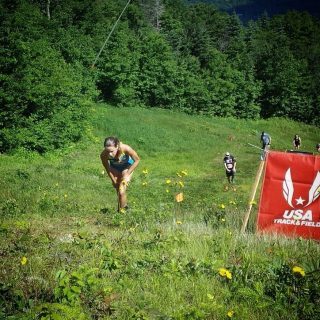
Addie Bracy climbs the Upper Walking Boss section of a ski slope at Loon Mountain Resort in New Hampshire on her way to her U.S. Mountain Running Championships. Photo: U.S. Mountain Running Team
Addie Bracy admits she was so frustrated about her running recently, she nearly quit the sport. Try as she did, the 29-year-old runner from Longmont, Colo., couldn’t reach the necessary qualifying standards to earn a spot in the U.S. Olympic Trials.
Between the 3,000-meter steeplechase and the 10,000-meter run, she estimates she raced 10 times with the hopes of qualifying. She got close several times—her best steeplechase mark was only about 3 seconds off—but she never made it. All the while she watched as training partners, friends and rivals earned their times and started getting excited about the Olympic Trials—which are going on from July 1-10 in Eugene, Ore.
A few weeks ago, she thought she was ready to take a break from competitive running, and maybe a permanent one.
But just as she felt she was going to hit rock bottom with her running, she started running on the trails to rekindle her passion. That’s about the time her Hudson Elite teammate Matt Daniels suggested she sign up for the July 3 U.S. Mountain Running Championships at Loon Mountain ski resort near Lincoln, N.H.
“Why not?” she thought, and started a crash course in mountain training.
Well, it’s funny how things work out sometimes. As the U.S. Olympic Trials were going on in Oregon, Bracy stormed to her first national title by winning the women’s 10.6K race at Loon Mountain in 57:25. The course, comprised of dirt, grass, wide pathways, singletrack trails and rocky sections, had an average grade between 10-12 percent and gained 3,100 feet from start to finish.
The top four women finishers earned a spot on the U.S. Mountain Running Team that will compete in Bulgaria in September.
“It was my first trail race so I had no idea what to expect,” said Bracy, who earned $700 for her victory. “It went out a little faster than I thought it would. I settled in about third for the first mile and went to second around the second mile, about 50 meters behind the leader (Bethany Sachtleben). On the first major climb I made a move and just hoped I could hold it. I looked back a few times … I was a little worried.”
Bracy has also represented the U.S. twice before at the Bupa Great Edinburgh International Cross Country Championships in 2012 and 2013.
“My teammate Matt Daniels suggested I run this race about three weeks ago after I called my track season over,” Bracy said. “I don’t think I’m ready to leave the track, but the mountain championships was fun and I’m really excited about Bulgaria.”
Less than one minute behind Bracy was second-place finisher and the top collegiate runner, Sachtleban, 24, of Manassas, Va., who finished in 58:17. Kim Nedeau, 36, Leverett, Mass., was third to the finish line in 59:04, followed by Ladia Albertson-Junkans, 30, of Seattle, in 59:45.
In fifth, just one spot shy of making her first U.S. team was uphill specialist Kim Dobson, 32, Eagle, Colo., who finished in 1:00:20. The Pikes Peak Ascent record-holder and four-time winner of the Mount Washington Road Race earned a $100 bonus for posting the fastest women’s time on the super-steep Upper Walking Boss section at the top of the course. Kasie Enman, 36, Huntington, Vt., 2011 World Mountain Running Champion, finished in sixth, 29 seconds behind Dobson.
Earning yet another national championship title, his 10th, as well as his ninth consecutive mountain running team spot, was Colorado Springs resident Joe Gray, 32, who bested a stellar men’s field of veteran mountain runners and newcomers by hammering the course in 49:12. For his win, Gray pocketed $700, and an additional $100 as the fastest climber on Upper Walking Boss (7:27).
“It went out quite hard from the gun, then slowed a bit,” Gray said. “It quickly became a strategic race. We stayed together until about the halfway mark—the top five guys, all bunched together. We were all kind of working together at that point. I took the lead at about four miles on the first climb where it started to thin out.
“I got a gap, but at the top of that first climb, I looked back and I could see the other guys. The gap I formed initially kept until the gondola section.”
Just over a minute back for second was Brett Hales, 29, of Layton, Utah, who finished in 50:18 to earn a spot on the six-person men’s team bound for Bulgaria. In third, and the top collegiate finisher, was Daniels, 28, of Evergreen, Colo. with a time of 50:37.
Rounding out the top four was another mountain running newbie Hayden Hawks, 25, of Cedar City, Utah, in a time of 50:50. In fifth place, yet another newcomer to the mountains, David Fuentes, 29, of Austin, Texas, posted a time of 51:07 to earn a spot on his first mountain team. Andy Wacker, 27, of Boulder, finished in sixth to earn a spot on his second mountain running team with a time of 51:14.
To get ready for Bulgaria, Bracy will get pointers from fellow Colorado runners Daniels and Wacker. For now, she’s ecstatic about her result after nearly walking away from running in mid-June.
“A few weeks ago, I almost quit the sport. After having a difficult, unsatisfying two years it no longer felt worth it,” Bracy said. “When I decided to run this race as a chance to have some fun doing what I love, never in my wildest dreams did I imagine that I would win my first national title. I can’t think of a better way to spend the 4th of July weekend than to earn a spot on Team USA for the World Mountain Running Championship. Oh yeah—and, that was hands down the most painful race I have ever run. Life—what a wild ride!”
Gray, the veteran of the U.S. squad, is optimistic about the American’s chances in Bulgaria.
“You instantly start thinking how your team will do at Worlds,” said Gray. “That’s the first thing I think about when my teammates come in.”
The biggest strength for this year’s squad according to Gray is experience.
“Everyone in the top six have had a long career of running superb,” he said. “They are tried and true. If everyone runs well on race day, that will equate to a good result.”
For complete results of the 2016 U.S. Mountain Running Championships, click here.
The post Addie Bracy, Joe Gray Win U.S. Mountain Running Championships appeared first on Competitor.com.
July 2, 2016
Molly Huddle Books Ticket to Rio With 10,000m Win at Olympic Trials
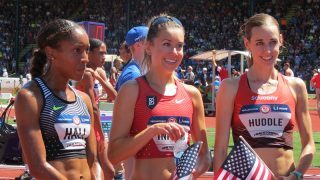
(c) 2016 Race Results Weekly, all rights reserved. Used with permission.
EUGENE, Ore. — Metronome Molly Huddle was at it again, magically clicking off kilometer after kilometer to dwindle down the women’s 10,000m field and win her second straight national title and her first USA Olympic Trials gold medal. Proving again that she is the most consistent American distance runner below the marathon distance, Huddle qualified for her second Olympic team after pulling away from Emily Infeld and Marielle Hall in the final laps. Infeld finished second today with Hall third. Both will be first-time Olympians.
From the gun Huddle went to the front and controlled the pace, the most experienced tactician in the field. Leading a train of contenders with consistent 76-second laps, Huddle got into a rhythm and kept the pace honest, but reasonable. All in tow waited for the next move to be made.
Things were calm until the unthinkable happened 2.25 miles in, when someone stepped on Kim Conley’s New Balance spike and dislodged her shoe. Stopping to adjust the shoe, Conley tried to quickly slip it on; yet it simply wouldn’t go.
Sitting and pulling it tight, she lost perhaps 50 meters (roughly 20 seconds) on the field. Though she tried to catch up, Conley would never reach the lead group and ultimately dropped out while in sixth position after 8000m.
Up front, Huddle passed 5,000m in roughly 16:09 before hitting 8,000m in 25:38.16. By that point only four women were with her: Infeld, Hall, Aliphine Tuliamuk, and Kellyn Taylor.
Huddle continued to squeeze the pace down even further in the subsequent laps, putting pressure on those that followed. First Taylor dropped off, then Tuliamuk faded. Finally there were only three: Huddle, Infeld, and Hall. With that, the Olympic team was set.
“I tried to just keep pressing. It’s hard up there alone. When you’re following someone it’s always just a little bit less stressful. But when I looked up and saw that there were four of us who’d broken away I thought ‘You just have to trust that this is hurting them. Don’t get weak now,'” Huddle described, sporting her medal, American flag earrings and nail polish.
Huddle and Infeld have a tumultuous history dating back to last year’s IAAF World Championships when Infeld nipped Huddle at the line for the 10,000m bronze medal. Here today, Huddle made sure that Infeld would not steal her glory, unleashing a 68-second final lap to solidify the title in 31:41.62. Infeld was second in 31:46.09, with Hall third in 31:54.77.
“With a lap to go I just put everything I had into it and tried to stay calm. It felt hard. I know it wasn’t a fast time but I wanted to make sure I didn’t take any risks,” she said. “I think we have a great team going to Rio.”
Huddle said that the plan all along was to get out front and control the tempo, working to see if anyone could keep up once it came to the race’s later stages. Using the stadium video boards to her advantage, she gauged how the field was doing.
“I felt like if I couldn’t break away in the first 5K I wanted to wait until the last 1,200m [to really push the field] and that’s just kind of what happened,” she said. “I tried to stay on the inside, but as long as I was in the top three I think that took a lot of stress off of me.”
Not having run any outdoor races this year prior to today, Infeld put any injury talk to rest by staying up front. Smiling from the time she crossed the line until the press conference’s conclusion, Infeld was visibly giddy.
“I am just so happy,” she said. “Jerry [Schumacher], this morning, we were having a chat before the race and he said you’ve dreamed of this since you were a little girl. I was like ‘I know,’ but I didn’t even want to think of that cause I wanted to think this was any other race. It’s crazy, cause I feel like I got into that race mode and doing that, across the finish line, it was like it really happened. We’re all going to Rio!”
All three athletes said their intention is to return to the track for the 5000m prelims on Thursday. Huddle ran both events in Beijing last year.
Favorites Advance in Men’s and Women’s 800m Semis
Boris Berian wasn’t leaving anything to chance in the men’s 800m semi-final, going out hard in 49.73 for the first lap. Keeping the lead down the backstretch, around the curve and into the homestraight, the Big Bear Track Club star held his own despite tying up in the final strides. With a time of 1:45.72, he was easily the fastest finisher of the round.
“I didn’t really want to go out THAT fast, but when I see that on the time I just said keep going, don’t slow down and use that momentum. It wouldn’t be smart to lose that spot so keep going,” Berian said. “I was [tying up] a little bit, but if anyone came up then I had a little bit left.”
If the race had been another five meters, Erik Sowinski, Cas Loxsom, and Isaiah Harris may have caught Berian. The trio all broke 1:46 with times of 1:45.82, 1:45.93, and 1:45.95, respectively.
Somewhat overlooked entering these Trials, Sowinski is comfortable where he’s at. He is the reigning World Indoor bronze medalist.
“I feel like I’m in the same position as last year,” he said, referencing when he made the World Championships squad. “I don’t really pay attention to anything outside of my race plan. Coach will sit me down and we’ll go through the same plan, be top three at 600, 700 and the last 100 we’ll see what happens.”
Clayton Murphy won a tumultuous second section, biding his time before striking 150 meters from the line. The former Akron Zip put himself in good position before sprinting away to the victory in 1:46.97, avoiding a tangle-up that involved Joseph White, Craig Engels, and Shaq Walker. Engels fell, got up and finished sixth in 1:55.40, but was advanced to the final by officials.
“I’m still adjusting to going out in 24 but I felt a lot better than I did yesterday,” said Murphy. “I just kept pushing to see what happened.
“I feel like if I’m there, I don’t like to get beat the last 100 meters. As long as I’m there with 200 to go I give myself a decent shot.”
Brenda Martinez sent a message to the women’s 800m field that she’s not messing around, winning her heat in 1:59.64 ahead of Molly Ludlow (1:59.81) and Alysia Montano (2:00.20). Though Ludlow and Montano led at the bell, Martinez moved hard on the backstretch and shifted into the pole around the curve.
“Any time I do the rounds I race to win just to be safe. You don’t want to take the last couple spots because someone can just take it,” said Martinez, the clear winner. “I know I have to be aware of where they are at. I didn’t want to be too far away from the front and I wanted to be on the outside, not break my rhythm, and felt good with 250 and that’s where I wanted to be aggressive and push.”
Martinez knows that it’ll take a fast time to make the top three in the final, and wanted to get the legs moving today. She feels confident in her ability to close and seeks her first Olympic spot.
Ajee’ Wilson and Kate Grace went one-two in the first section, running 2:00.81 and 2:00.94. Chrishuna Williams was third in 2:01.29, while Chanelle Price was sent packing after her fifth place spot (2:01.94).
The post Molly Huddle Books Ticket to Rio With 10,000m Win at Olympic Trials appeared first on Competitor.com.
July 1, 2016
Galen Rupp Surges to 10,000m Title at U.S. Olympic Trials
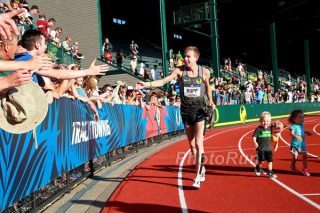
Photo: PhotoRun.net
(c) 2016 Race Results Weekly, all rights reserved. Used with permission.
EUGENE, Ore. — You could call it what you want: a war of attrition, fartlek, or game of cat and mouse.
The men’s Olympic Trials 10,000m was a pure test of will, with athletes wavering back and forth trying to decide what to do on Hayward Field’s maroon oval. In the end, Galen Rupp won his eighth consecutive national title thanks to superior tactics, securing yet another entry into the Rio de Janeiro Olympic Games. Behind him, two U.S. Army servicemen, Shadrack Kipchirchir and Leonard Korir, surprised the 20,987-person crowd earning their first-ever Olympic team berths.
“This was one of the harder ones for sure, if not the hardest,” said Rupp, sporting his gold medal. “It was really tough with the heat and just great competition too. You saw some really, really good guys out there really struggle.”
From the start, all eyes were on Rupp, the American record holder and Olympic silver medalist, as he took a pause from Olympic Marathon training to run in front of his Oregon fans. Taking their usual place in his wake, the field was sure to key off Rupp, the winner of more USA 10,000m titles than anyone in history.
It was six minutes in when Rupp threw a surprise surge that caught the field by surprise, stringing out the bunch within seconds. Building a three second lead at 3200m (9:03.14), Rupp ran by alone steps ahead of the field.
Yet the 30-year-old veteran questioned the move and dialed it back a notch, not wanting to risk going too early and fading in the end. It was a smart decision.
After returning to the group for the better part of five minutes, Rupp got antsy. With 13 laps remaining, he’d shoot well out front once again, drawing a gasp from the Hayward Field faithful. Kipchirchir and 41 year-old Bernard Lagat were the only men bold enough to risk their chances and go with the former University of Oregon Duck.
That decision ultimately would backfire for Lagat. While in third place at 7,400 meters, Lagat suddenly stopped and collapsed to the track due to heat exhaustion. He wouldn’t be the lone victim of the elements.
Oregon Track Club Elite’s Hassan Mead found himself in third with Lagat’s demise, though too would succumb to the conditions. Mead was in third nearly until eight kilometers, when he stopped and needed medical attention (he’d later get up and jog a few laps through the finish, though is in results as a DNF).
Rupp continued to lead with Kipchirchir on his tail while the new third placer—Korir—was poised to make an Olympic team some 20 seconds behind. It’s was all thanks to Korir’s mindset he learned in boot camp: don’t give up.
“You know, my training in the Army, they always tell me, we always say ‘don’t give up.’ When I saw those guys, I think there were three guys in front and I was running with Hassan Mead, I told myself ‘don’t worry, you still have almost eight laps to go,'” he recalled. “With a mile to go I felt really good and I saw I was in a position to make the third spot. When that opportunity presented itself, I told myself ‘You know what, this is the time now to keep pushing and working hard.'”
A bit of drama was left for the last lap, when Kipchirchir tested Rupp at the bell with a fierce sprint. Rupp kept enough in the tank to respond entering the Bowerman curve, and powered home to win in 27:55.04, further solidifying his spot as the winningest 10,000m American in history.
“They are all special. Being able to run an Olympic Trials, it’s a whole other level than a normal national championship and I’m just so thrilled to be able to represent my country again,” said Rupp. “Personally, just to have my kids here and my family, this is definitely a little extra special for me.”
Rupp made sure to make it clear that he has not decided what events to run in Rio, and that decision will come following the 5000m. If he qualifies in the 5,000m, he will make a decision whether to run the 10,000m/marathon double or the 5,000m/10,000m double.
Coached by Olympic marathoner Dan Browne, Kipchirchir (28:01.52) and Korir (28:16.97) are the second and third U.S. Army representatives to qualify for the Olympics. Yesterday, John Nunn won the 20K Race Walk in an Army vest.
“We represent the Army, this is our job, we have to do well and when we set a goal we have to accomplish it. It means a lot to us,” said Kipchirchir, speaking for the Army’s success here.
Interestingly, Galen Rupp is the first American to qualify for the 10,000m and marathon at the same Olympics since Dan Browne, who ran both disciplines in Athens in 2004. Browne, who coaches Kipchirchir and Korir, was very emotional after the race. He told Race Results Weekly that this wasn’t a day he’d ever forget.
“It’s magical, just magical,” he said. “It’s awesome. Definitely, I’m just so excited for my guys.”
Fourth went to Hoka One One Team Northern Arizona Elite’s Scott Fauble in 28:45.53, steps up on Bowerman Track Club’s Chris Derrick (28:47.24). Among those not to finish in addition to Lagat and Mead were Eric Jenkins, Futsum Zienasellassie, Diego Estrada, and German Fernandez.
Favorites Falter in Men’s 800m Prelims
It was a tumultuous first round of the men’s 800m, with the harsh reality of the Olympic Trials elimination system in full force. Duane Solomon, an Olympic finalist in 2012, as well as Donavan Brazier, the NCAA Champion and collegiate record holder, were on the outside looking in when all was said and done.
“There was no time to react. I tried to do a little move,” said Solomon, who appeared nonchalant in the mixed zone, before learning his fate. Leading for the first 700 meters, the USC alum wasn’t aware that the pack was closing fast behind him. Caught by a previously boxed-in Drew Windle (1:48.66), Joseph White (1:48.68) and Charles Jock (1:48.71), Solomon’s 1:48.71 mark was not quick enough to advance (Jock and Solomon had the same time to the hundredth of a second, but when timers examined it to the thousandth of a second they gave the edge to Jock, 1:48.704 to 1:48.710).
“It was a rookie mistake on my part. I should have run all the way through the line,” said Solomon. “I hope I get another chance… I’ve been working on my kick a lot. My kick is there. I’ve felt really good in the last 100m of my races. I didn’t want to put too much into it but I didn’t know they were [there].”
As for Brazier, fatigue was the culprit. Tightening up down the stretch after leading a majority of the way, the newly minted professional athlete was beat by Clayton Murphy (1:47.61), Brandon Johnson (1:47.62) and Harun Abda (1:47.88). Brazier’s time was 1:48.13.
“I got tired and slowed down,” Brazier explained, shaking his head and shrugging his shoulders. “I wanted an honest race and I tried doing it. It didn’t work out and it’s back to the drawing board.”
Brazier will continue to train at Texas A&M in College Station. There will be no trip to Rio de Janeiro or the IAAF World Junior Championships in Poland; he bypassed the USA Junior Championships in favor of the Trials.
“After that I feel bad, really bad,” he said. “I should have gone out faster, about two seconds faster… I’m tired man, I’m tired. I had a long season. I’m trying to get through this. I think I was focusing too much on the long run at this meet instead of just focusing on the rounds. That’s something I’m going to work on.”
For the winner Murphy, it was a good day at the office.
“I got through. Prelim day legs for sure. It was nice to knock the rust off. I hadn’t been on the track for a while. All in all, a good day,” he said. Turning his attention to the elimination of Brazier, Solomon, and Nick Symmonds (who scratched yesterday) all being out, Murphy remained focused on himself. “I mean, it’s still a tough field. It’s an Olympic Trials. Anything can happen, obviously. I’ve still got to line up and race two more races if you want to make the team.”
The fastest time on the day was clocked by Boris Berian, returning to Hayward Field with an axe to grind. Running 1:46.03 to win heat two, the fastest-ever first round time in an Olympic Trials, Berian looked in control through the round (despite a hard charge by Erik Sowinski down the stretch). Berian is glad to have the lawsuit with Nike behind him, and now can focus entirely on the task at hand. He broke in a fresh new pair of New Balance spikes.
“I’m a lot more relaxed now,” he said. “It’s been a while since I raced so I just wanted to get out, cut, and not slow down.”
“I’m just trying to stay as focused as I can. Keep all the crazy legal stuff to my agent and lawyers and kind of just me relax, focus on running, and relaxing.”
The third section was surprisingly won be Penn State’s Isaiah Harris in 1:47.60, a step up on former Nittany Lion and current Brooks Beast Cas Loxsom (1:47.76). Shaq Walker, who also just turned pro, was third in 1:47.76 as well.
Ludlow, Montano Leads Women’s 800m Qualifiers
The first section was the fastest for the women’s 800m, where Molly Ludlow and Alysia Montano went first and second in 2:00.30 and 2:00.56, respectively. Veterans of the Trials system, Ludlow and Montano did what was necessary to assure a spot in tomorrow’s semi-final.
“I’ve trained so hard and am so strong that making it through the rounds for me is not an issue. It’s just another day at the office. I really do feel like I’ve got a lot left in me,” said Ludlow. Fourth at the Trials in 2012 and at last year’s USA Championships, she’s hoping to move up onto the podium. “I’ve literally gotten fourth place at every single meet you could ever think of. I’m so sick of getting fourth place.”
Brenda Martinez was next fastest in 2:00.85, winning heat two over Chanelle Price (2:01.13) and Phoebe Wright (2:01.35). Favorite Ajee’ Wilson fought off Stanford’s Olivia Baker down the stretch of the third section. Their times were 2:03.31 and 2:03.68, with high schooler Sammy Watson hot on their heels in 2:04.12. Watson would not advance.
Other winners included Chrishuna Williams (2:03.18) and Kate Grace (2:01.36). One prominent Oregon Duck advancing was NCAA champion Raevyn Rogers (third in heat five, 2:01.67), though Duck alum Laura Roesler was eliminated after her 2:03.55 showing (fourth in section four).
“I thought I ran pretty strong, running a conservative pace, and everyone was just finishing strong. I was too but…” said Roesler. “I knew everyone was in the mix, of course they are going to be when you go through in 60 or whatever we did. I expected that. Everyone’s a contender and you can never count anyone out. I expected all eight people in the field to be there.”
The post Galen Rupp Surges to 10,000m Title at U.S. Olympic Trials appeared first on Competitor.com.
Ancestral Athletes: American Runners Chase Olympic Dreams for Other Countries
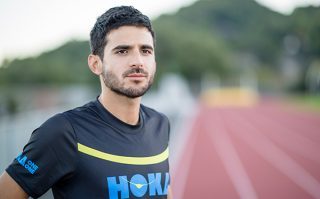
David Torrence
David Torrence vividly remembers sitting on his grandmother’s porch in the Reseda neighborhood of Los Angeles with his sister and cousins after school when he was a kid in the mid-1990s. They’d do homework, eat picarones and sip Inca Kola while waiting for their parents to pick them up after work.
Picarones are a traditional Peruvian fried dough treat similar to a donut or a beignet that are made from pumpkin or squash and flour and served with a sweet syrup. Inca Kola is a distinctly bright yellow soda from Peru with a lemony flavor that, he says, although available at some stores in the Los Angeles area, typically only Peruvian kids seemed to like.
“Some of my friends would come over and try it and the majority of them wouldn’t like it. It was a Peruvian thing,” Torrence, an elite American distance runner, recalls with a laugh. “As kids, we definitely all knew we were Peruvian—the Peruvian culture, the food, the language, the music was all around us at our homes and at family gatherings—and we were very proud of it.”
His mom, Bianca Torrence, grew up in Peru and emigrated to the U.S. in the 1990s with her parents and five siblings. As the family grew, they maintained their connection to the vibrant Peruvian community that was prevalent in the San Fernando Valley. (David’s dad, who died when David was 6, hailed from the U.S.)
“Everything we did as a family and the customs and attitudes of my family was all based in Peruvian culture,” Torrence recalls.
As he grew up in the Los Angeles suburb of Tarzana, though, Torrence, became a typical American kid. He liked American music, movies and sports teams, just like the rest of his friends. He ran cross country and track for Loyola High School in Los Angeles and improved enough during his senior year to run a 4:10 mile, win a few state titles and earn a scholarship to UC-Berkeley.
Since graduating from college in 2009, Torrence, who is 30, has emerged as one of the better middle-distance runners in the U.S. between 800 and 5,000 meters. Working under veteran U.S. coach John Cook, he’s continued to improve his times as a professional—including 3:52.01 in the mile and 13:16.53 for the 5,000. (After being backed by Nike for several years, he’s now sponsored by Hoka One One.) He’s also won four U.S. titles, set an American record in the 1,000-meter run indoors, helped the U.S. win a silver medal in the 4 x 1,500 relay at the IAAF World Relays in 2014 and earned a silver medal in the 5,000 while wearing a Team USA singlet in last summer’s Pan American Games in Toronto.
Like just about every elite distance runner, Torrence has dreamed of running in the Olympics since he was a teenager. He placed sixth in the competitive 1,500 finals at the 2012 U.S. Olympic Trials, missing a chance to run in the London Olympics by three places and a mere 1.02 seconds.
But this time around, Torrence won’t be racing in the July 1-10 U.S. Olympic Trials in Eugene, Ore., where the top three finishers will earn a spot on the U.S. team bound for Rio de Janeiro. Instead, he’s preparing to compete in the Summer Olympics for Peru—the country from which his mother’s side of the family hails—possibly in 1,500 and/or the 5,000.
“I’m very grateful for the opportunity to run for Peru, both to represent my family and the country,” Torrence says. “My family has been wanting me to do this for a very long time, both my family in the U.S. and in Peru. I first looked into it back in 2008, but I didn’t think it was the right opportunity for me at the time.”
Torrence is very familiar with the culture and the customs of Peru. He has visited there numerous times since he was a kid, including several post-collegiate, high-altitude training sessions over the past several years. He did a training stint there last fall while visiting family for the holidays and again recently while preparing for his 2016 outdoor track season.
Strangely enough, as the U.S. Olympic Trials get underway in Eugene, Torrence is the No. 2 ranked U.S. runner in the 1,500. The 3:36.02 clocking he posted in a race near Philadelphia on May 16 is just one-hundredth of a second behind U.S. leader Ben True (who is focusing on the 5,000 and 10,000 and isn’t running the 1,500 at the Trials). But, as Torrence knows, the U.S. has loads of depth in the event, led by 2012 Olympic silver medalist Leo Manzano and 2013 world championships silver medalist Matthew Centrowitz. In all, there are more than 30 U.S. runners who have broken 3:39.00 this year, so making it through three rounds and placing in the top three of the finals of the Trials will be an especially tall order.
Torrence is also ranked No. 4 in the U.S. in the 5,000 with the 13:19.4 effort he ran on May 4 at the Payton Jordan meet in Palo Alto, Calif. But the U.S. has plenty of depth in that event, too, and, Peru doesn’t have any other runners who have surpassed the Olympic qualifying standard in the 800, 1,500 or 5,000. Torrence is one of only about two dozen athletes competing for Peru in Rio.
“I think I would have had an excellent shot at making the U.S. team, but this is a decision I made and I’m happy with it,” Torrence says. “Whoever makes the team for the U.S., it will be a competitive group. I was happy and proud to represent to the U.S. when I did, and now happy and proud to represent Peru, and hopefully be able to inspire some people there and maybe impact the running culture in a positive way, too.”
Torrence is one of a handful of U.S. distance runners who will be competing for another country at next month’s Summer Olympics in Rio. Among the others are Colorado Springs-based marathoner Carlos Trujillo, who is representing Guatemala; Jorge Maravilla, a San Francisco ultrarunner who is competing in the marathon for El Salvador; Oregon’s Alexi Pappas, who will run the 10,000-meter run for Greece; and Oregon’s Aisha Praught, who will run the 3,000-meter steeplechase for Jamaica.
Each has a different story, but they’re unified with the intent of following the dream of running in the Olympics for a country that is tied to their family heritage.
“I feel so blessed to have the opportunity to run in the Olympics,” says Pappas, who is connected to Greece via her maternal grandmother who was born there. “It’s a dream come true.”
RELATED: Olympic Dreams Unfolding on and off the Silver Screen for Alexi Pappas
The post Ancestral Athletes: American Runners Chase Olympic Dreams for Other Countries appeared first on Competitor.com.
Ryan Hall's Blog
- Ryan Hall's profile
- 21 followers



